A GUIDE FOR TODAYS SMALL BUSINESS OWNER
Before you start applying for a loan, you need to answer several critical questions to help you determine which kind of lender and loan is best for you:
- How much money do you need?
- What do you need the money for?
- How quickly do you need the money?
- How long will it take you to pay it back?
- How long have you been in business?
- What is the current financial shape of your business?
- How much collateral, if any, do you have to put up for the loan?
Answering these questions will help determine if you should pursue a government-backed loan, a loan or line of credit through a bank, or a cash advance, line of credit or loan from an alternative lender.
Premier Business Lending offers many different types of financial products to support its customer base. Eric Jenkins, Managing Partner says: “Every small business owner has different needs at different times. Premier Business Lending’s uniqueness is that we can accommodate much of the marketplace by providing custom fit financing based on each customer’s individual needs. For example: One of our larger Franchisee’s may need a $100,000 SBA product today but will want $150,000 equipment purchase tomorrow.”
Premier Business lending recently helped White Hawk Carriers located in Stockton California secure a $250,000 working capital bridge loan last month. Juana Solorzano, CFO for White Hawk Carriers said “Several times per year White Hawk Carriers may need a cash injection to create immediate cash flow for the Business. Most of our Vendors typically pay us on a net 45 or even net 60. So it is very helpful and makes sense for us to have quick access to capital so we do not stall projects.”
There are many finance options available to small business owners today, Jenkins says: “It is important for business owners to have guidance when deciding which financial product will best suits their needs”. Premier’s Finance Consultants are experts in all business lending products. SBA Loans, Conventional Bank Loans, Alternative Financing, Equipment Leasing, Lines of Credit, Hybrid Lines of Credit, Franchise Lending, Start Up Franchise Lending and Merchant Cash Advances. Trying to maneuver through all of this information and financial jungle of our industry can be very intimidating for business owners. When all they are trying to do is make the best decision for their business. This is exactly why Premier Business Lending takes the time to properly train our finance consultants to help consult today’s business owners vs. our competition that for the most part are turning and burning their sales reps and their customers.”
Here are the basics of the most common products available for small business owners:
SBA loans
Currently, the SBA offers four types of small business loans:
- 7(a) Loan Program: 7(a) loans, the SBA’s primary lending program, are the most basic, common and flexible type of loan. They can be used for a variety of purposes, including working capital, to purchase machinery, equipment, furniture and fixtures, the purchase of land and buildings, construction of new buildings, renovation of an existing building, to establish a new business or assist in the acquisition, operation or expansion of an existing business, and debt refinancing. These loans have a maximum amount of $5 million, and borrowers can apply through a participating lender. Loan maturity is up to 10 years for working capital and generally up to 25 years for fixed assets.
- Microloan program: The SBA offers very small loans to new or growing small businesses. The loans can be used for working capital or the purchase of inventory, supplies, furniture, fixtures, machinery or equipment, but can’t be used to pay existing debts or purchase real estate. The SBA makes funds available to specially designated intermediary lenders, which are nonprofit organizations with experience in lending and technical assistance. Those intermediaries then make loans up to $50,000, with the average loan being about $13,000. The loan repayment terms vary based on several factors, including the loan amount, planned use of funds, requirements determined by the intermediary lender and the needs of the small business borrower. The maximum repayment term allowed for an SBA microloan is six years.
- Real estate and equipment loans: The CDC/504 Loan Program provides businesses with long-term fixed-rate financing for major assets, such as equipment and real estate. The loans are typically structured with the SBA providing 40 percent of the total project costs, a participating lender covering up to 50 percent and the borrower putting up the remaining 10 percent. Funds from a 504 loan can be used to purchase existing buildings, land or long-term machinery; to construct or renovate facilities; or to refinance debt in connection with an expansion of the business. These loans cannot be used for working capital or inventory. The maximum amount of a 504 loan is $5.5 million, and these loans are available with 10- or 20-year maturity terms.
- Disaster loans: The SBA provides low-interest disaster loans to businesses of all sizes. SBA disaster loans can be used to repair or replace real estate, machinery and equipment, as well as inventory and business assets that were damaged or destroyed in a declared disaster. The SBA makes disaster loans of up to $2 million to qualified businesses.
Loans from conventional banks and alternative lenders
Banks and alternative lenders offer some similar loans to those offered by the SBA, as well as funding options that the SBA doesn’t offer, including the following:
- Working-capital loans: Working-capital loans are designed as short-term solutions for businesses in need of money to help run their operation. Working-capital loans are available from both banks and alternative lenders. The advantage of a working-capital loan is that it gives small businesses the ability to keep their operations running while they search for other ways to increase revenue. Some downsides of a working-capital loan are that they often come with higher interest rates and have short repayment terms.
- Equipment loans: In addition to the SBA, both banks and alternative lenders offer their own types of equipment loans. Equipment loans and leases provide money to small businesses for office equipment, like copy machines and computers, or things such as machinery, tools and vehicles. Instead of paying for the large purchases all at once up front, equipment loans allow business owners to make monthly payments on the items. One benefit of equipment loans is that they are often easier to obtain than some other types of loans because the equipment being purchased or leased serves as collateral. Equipment loans preserve cash flow since they don’t require a large down payment and may offer some tax write-offs.
- Merchant cash advance: This type of loan is made to a business based on the volume of its monthly credit card transactions. Businesses can typically receive an advance of up to 125 percent of their monthly transaction volume. The terms for repaying a merchant cash advance vary by lender. Some take a fixed amount of money out of a business’s merchant account every day, while others take a percentage of the daily credit card sales. The best candidates for merchant cash advances are businesses with strong credit card sales, such as retailers, restaurants and service businesses. The advantages of merchant cash advances are that they are relatively easy to obtain, funding can be received in as quickly as a few days, and the loan is paid back directly from credit card sales. The biggest downside is the expense: Interest on these loans can run as high as 30 percent a month, depending on the lender and amount borrowed.
- Lines of credit: Like working-capital loans, lines of credit provide small businesses money for day-to-day cash-flow needs. They are not recommended for larger purchases, and are available for as short as 90 days to as long as several years. With a line of credit, you take only what you need and pay interest only on what you use, rather than the entire amount. These loans are usually unsecured and don’t require any collateral. They also have longer repayment terms and give you the ability to build up your credit rating if you make the interest payments on time. The downsides are the additional fees charged and that they put small businesses in jeopardy of building up a large amount of debt.
- Professional practice loans: Professional practice loans are designed specifically for providers of professional services, such as businesses in the health care, accounting, legal, insurance, engineering, architecture and veterinary fields. These types of loans are typically used for purchasing a practice, buying real estate, renovating office space, buying new equipment and refinancing debt.
- Franchise startup loans: Franchise startup loans are designed for entrepreneurs who need financing to help open their own franchise business. These loans, offered by banks and alternative lenders, can be used for working capital, or to pay franchise fees, buy equipment and build stores or restaurants.



